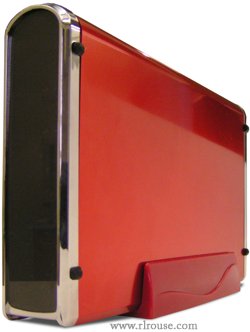 USB hard drives are wonderful devices. You simply connect the drive to an unused USB port, then use it just like any other hard drive. When you’re done you can disconnect it and take it with you. You can then use it again later on a different PC. What a great way to share files between a desktop and notebook computer!
USB hard drives are wonderful devices. You simply connect the drive to an unused USB port, then use it just like any other hard drive. When you’re done you can disconnect it and take it with you. You can then use it again later on a different PC. What a great way to share files between a desktop and notebook computer!
With capacities soaring and prices at an all-time low, it’s hard to find a computer user anywhere who still doesn’t own at least one USB hard disk drive. But some of them are running into a small, but very irritating problem: Some older computers won’t boot up into Windows while a USB drive is attached to the machine. Luckily, there is a very simple fix…
If your PC fails to start up with a USB hard drive attached, enter the BIOS Settings screen and disable the feature known as “USB Legacy Device Support”. The procedure for entering the BIOS Setup screen varies from PC to PC, but it usually involves pressing a designated key such as Esc or F10 just as the computer begins the boot-up process.
What’s happening is every time your computer tries to boot up, it sees that there is a USB hard drive connected so it tries to boot from it. And since there is no operating system on the external drive, the system simply refuses to boot at all! Disabling USB Legacy Device Support in the BIOS prevents the computer from “seeing” the external drive until after Windows has loaded, allowing the system to boot into Windows as usual.
One caveat: If your PC uses a USB keyboard you won’t be able to use it until the system has completely loaded the Windows operating system. This means of course that after USB Legacy Device Support has been disabled you won’t be able to boot up into Safe Mode, enter the Bios Settings screen again, or do anything else that requires the use of the keyboard before Windows is up and running. In this case, you have two options:
1 – Replace your USB keyboard with one that uses a PS/2 connection. (You can pick one up for peanuts these days.)
2 – Simply leave your USB Hard Disk disconnected until Windows has booted up, the plug it in and use it to your heart’s content.
Personally, I ended up buying a new PS/2 keyboard for less than $20 because I tend to leave my external hard drive connected 24/7.
About the author: Rick Rouse is the owner of RLROUSE.COM. He is also an A+ Certified Computer Technician with over 30 years of experience in the industry.